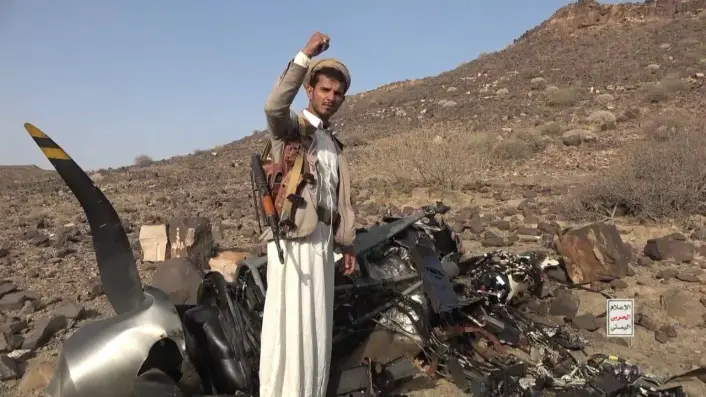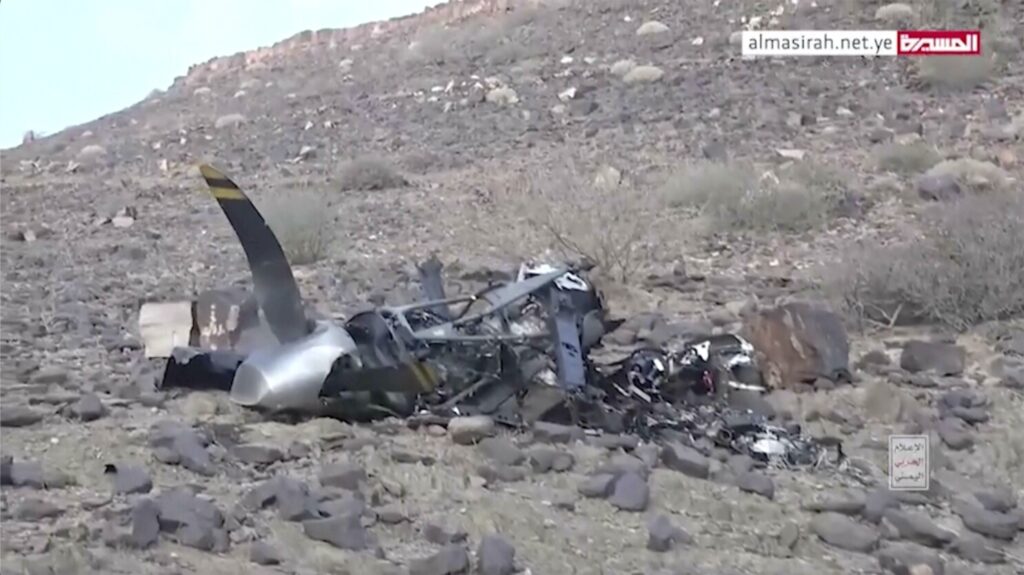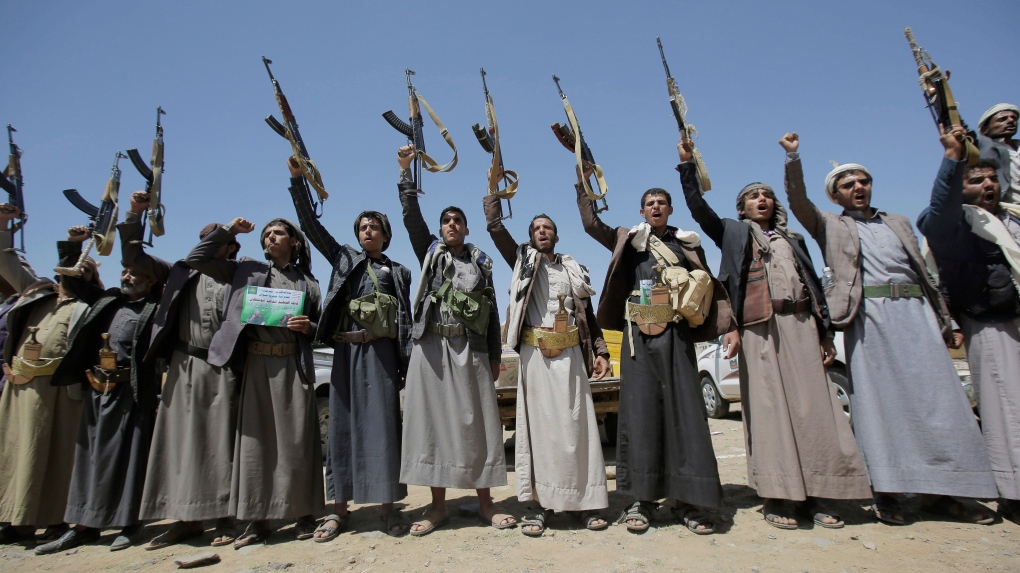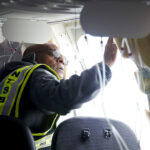In recent developments from the Middle East, the Houthi movement known as Ansar Allah has announced the downing of its 14th U.S. MQ-9 Reaper drone. This ongoing conflict underscores the shifting dynamics in Yemen’s civil war and the broader geopolitical implications for U.S. involvement in the region. The incident also highlights the increasing sophistication of Ansar Allah’s military capabilities, alongside U.S. concerns regarding drone warfare in conflict zones. This article will delve into the implications of this drone shootdown, the capabilities of the MQ-9 Reaper, and an analysis of the military strategies employed by Ansar Allah.
Ansar Allah Claims Downing of 14th U.S. MQ-9 Reaper Drone


In a recent statement, Ansar Allah has reported the successful interception of a U.S. MQ-9 Reaper drone, marking a significant milestone in their ongoing conflict with U.S. and Saudi-led coalition forces. This incident represents a continuation of the Houthis’ claims regarding their enhanced aerial defense capabilities. The drone was reportedly shot down while conducting reconnaissance missions over Yemeni territory, a task consistent with the MQ-9’s primary functions. Ansar Allah’s announcement came alongside video footage purportedly showing the downed drone, which they claim reinforces their military prowess.
The downing of the 14th MQ-9 Reaper underscores the persistent threat that Ansar Allah poses to U.S. assets in the region. With drone warfare becoming an increasingly central element of modern military engagements, the loss of such high-tech equipment signifies a notable tactical achievement for the Houthi forces. Furthermore, these actions are reflective of their broader strategy to challenge foreign intervention in Yemen, particularly from the United States and its allies, thereby bolstering their domestic legitimacy.
The growing number of drones downed by Ansar Allah may also indicate an escalation in hostilities, as the group continues to enhance their air defense systems, likely obtained from external sources or developed through reverse engineering. The incident raises questions about the effectiveness and safety of U.S. drone operations in a volatile conflict zone. Moreover, the increasing frequency of these claims highlights the need for a reassessment of U.S. military strategy in the region, particularly concerning aerial surveillance and reconnaissance missions.
As the conflict in Yemen persists, the implications of such incidents extend beyond immediate military concerns. They play a significant role in shaping public perception and influencing political narratives both domestically within Yemen and internationally. Ansar Allah’s ability to showcase their successes against U.S. drones serves as a propaganda tool, aimed at consolidating support for their cause and portraying themselves as a formidable force against foreign aggression.
Overview of the MQ-9 Reaper Drone’s Capabilities and Roles


The MQ-9 Reaper drone is a remotely piloted aircraft developed by General Atomics, primarily utilized by the U.S. Air Force and other military branches for intelligence, surveillance, reconnaissance, and strike missions. Equipped with advanced sensors, including high-resolution cameras and infrared imaging systems, the Reaper provides commanders with real-time data and situational awareness over vast areas. Its ability to operate at altitudes of up to 50,000 feet allows for prolonged missions that can last over 24 hours, making it a crucial asset in modern warfare.
One of the Reaper’s defining features is its payload capacity, which enables it to carry a range of weaponry, from Hellfire missiles to laser-guided bombs. This versatility positions the MQ-9 as both a surveillance platform and a strike aircraft, capable of engaging targets with precision. Its deployment has been integral to U.S. military operations, particularly in counterterrorism efforts and operations against hostile entities in regions like the Middle East and North Africa.
The operational role of the MQ-9 extends beyond direct combat; it also serves as a force multiplier for ground troops. By providing real-time intelligence and reconnaissance capabilities, the Reaper assists in battlefield decision-making and enhances the effectiveness of ground operations. Its presence in conflict zones has been critical in shaping the battlefield dynamics, allowing for targeted attacks against enemy forces while minimizing the risk to U.S. personnel.
However, as evidenced by recent events, the reliance on drone warfare poses significant challenges. While the MQ-9 Reaper represents technological superiority, it is not impervious to defensive measures. The increasing ability of groups like Ansar Allah to successfully target and down these drones raises concerns about the vulnerabilities inherent in drone operations. As asymmetric warfare tactics evolve, the implications for U.S. military strategies must be carefully considered to mitigate risks and maintain operational effectiveness.
Implications of Drone Shootdowns on U.S.-Yemen Relations


The shootdown of U.S. drones by Ansar Allah has profound implications for U.S.-Yemen relations, which have been strained since the onset of the Yemeni civil war. The increasing frequency of these incidents serves to exacerbate tensions between the U.S. and Iran-backed Houthi forces. As Ansar Allah successfully engages U.S. military assets, it sends a clear message of resistance, potentially inflaming regional hostilities and complicating diplomatic efforts aimed at resolving the conflict.
Moreover, the loss of advanced U.S. military technology in the hands of Ansar Allah could alter the balance of power within the region. Such achievements by the Houthis may encourage them to adopt more aggressive military postures, emboldening their stance against foreign intervention. This dynamic could lead to a more entrenched conflict, diminishing the prospects for peace negotiations and further destabilizing an already fragile situation.
The U.S. government’s response to drone shootdowns will likely be scrutinized both domestically and internationally. An escalation in military actions may be seen as an effort to reassert dominance in the region, but it could also provoke further retaliatory measures by Ansar Allah, perpetuating a cycle of violence. The complex web of alliances and enmities in Yemen necessitates a careful balancing act for U.S. policymakers, who must weigh the risks of confronting the Houthis against the desire to protect U.S. interests and personnel.
Furthermore, the implications of these shootdowns extend beyond immediate military concerns; they also resonate within the context of U.S. relations with regional allies, particularly Saudi Arabia. As a key partner in the coalition against the Houthis, Saudi Arabia’s concerns regarding the efficacy of U.S. drone operations and air defenses may lead to increased pressure on the U.S. to take robust action. The potential for increased regional instability necessitates a reevaluation of U.S. strategies and partnerships in the Middle East.
Analysis of Ansar Allah’s Military Strategy and Tactics


Ansar Allah’s military strategy has evolved significantly since the onset of the Yemeni civil war, adapting to the changing landscape of warfare and asymmetric combat. The group’s ability to effectively down U.S. drones reflects a multifaceted approach that combines guerrilla tactics, technological innovation, and external support. By leveraging their knowledge of the terrain and employing advanced anti-aircraft systems, Ansar Allah has demonstrated a capacity to counter technologically superior adversaries.
Central to their strategy is the use of unconventional warfare techniques, which allow them to exploit vulnerabilities in U.S. military operations. This includes the deployment of surface-to-air missiles, anti-drone technologies, and advanced electronic warfare capabilities. Such tactics challenge traditional air dominance enjoyed by U.S. forces, compelling a reassessment of operational protocols and strategies in contested environments.
Additionally, Ansar Allah’s military strategy is underpinned by the support they receive from regional allies, notably Iran. The transfer of military technology and expertise from Iran has bolstered the Houthis’ capabilities, enabling them to develop more effective defensive systems against aerial threats. This relationship has significant implications for regional security, as it allows Ansar Allah to enhance their operational effectiveness while posing a direct challenge to U.S. interests in the Middle East.
Moreover, the psychological impact of their military successes plays a crucial role in Ansar Allah’s strategy. The ability to claim victories, such as the downing of U.S. drones, serves to galvanize their support base and intimidate adversaries. Each successful interception not only boosts morale among their ranks but also enhances their image as a formidable force against foreign intervention. This aspect of warfare highlights the importance of perception in modern conflicts, where narratives can significantly shape outcomes as much as direct military engagements.
The downing of the 14th U.S. MQ-9 Reaper drone by Ansar Allah is emblematic of the increasingly complex and volatile nature of the conflict in Yemen. As the Houthis continue to assert their military capabilities, the implications for U.S.-Yemen relations and regional stability become more pronounced. The advanced capabilities of the MQ-9 Reaper serve as a reminder of the inherent risks of relying on drone warfare, especially in asymmetric conflict scenarios. Ultimately, the evolving strategies and tactics employed by Ansar Allah will necessitate a reevaluation of U.S. military approaches in the region, with broader ramifications for international relations and security in the Middle East.














